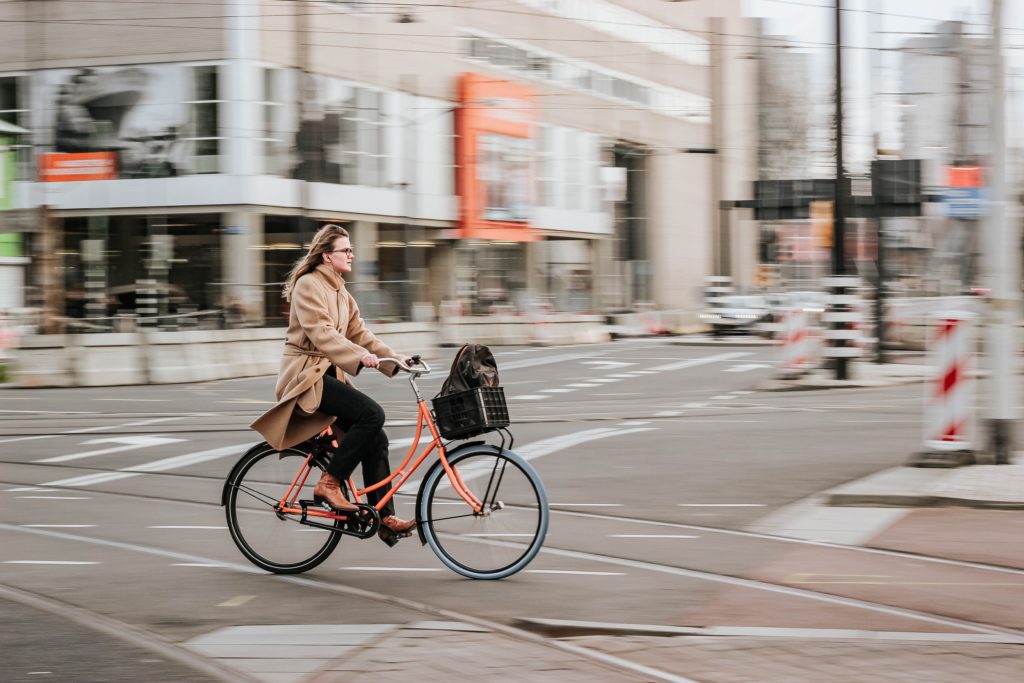Why is this important?
Light vehicles, including passenger cars, account for about a third of global oil demand and produce about half of all transportation-related greenhouse gas emissions.(1)
Changing commuting behaviour is a key factor in sustainable mobility, with great potential to reduce greenhouse gas emissions and local air pollution. It can also significantly contribute to improving the quality of life for staff, saving time and money.
Organisations can drive change by setting ambitions, developing a corporate mobility plan and implementing policies that encourage and incentivise cleaner and healthier mobility choices.
Maintaining and institutionalising teleworking is critical to reducing emissions, building upon the Covid-19 experience. Green commuting includes public transport, soft mobility (cycling, walking), carpooling or carsharing, efficient driving and switching to electric cars.
What is the solution?
Reducing travel is the fastest way to cut emissions, making teleworking essential. Organisations can go beyond the minimum number of days required and recommended by the authorities by allowing and encouraging flexible home-based work, covering internet, coworking space memberships, or phone bills, and providing reliable videoconferencing tools with proper training.
Promoting soft mobility is another powerful solution: installing secure covered bike parking, changing rooms and showers, and subsidising (e)bikes lowers barriers to cycling. Organisations can also provide bikes for local business travel, organise events such as Bike to Work or Bike Repair Days, and encourage municipalities to invest in safe cycling infrastructure, including bike paths, parking, and bike-friendly trains. Where available, public transport should be prioritised: offering partial reimbursement of tickets, adapting working hours to train timetables, guaranteeing up to five emergency rides home each year, and choosing office locations close to transport hubs all strengthen its use.
Finally, when cars remain unavoidable, reduction and optimisation are crucial. Organisations can set up internal carpooling systems, subsidise car-sharing apps, reserve parking only for sharers, discourage SUVs, provide eco-driving training, incentivise the use of alternative fuels, and install charging stations for electric vehicles. Together, these measures create a comprehensive framework to reduce emissions from commuting and business travel.

Key solutions
-
#1 Teleworking
Reducing travel is the fastest and most effective way to reduce emissions for all staff. Remote work is key. Organisations can encourage flexible home-based work, cover digital expenses, and provide strong videoconferencing tools with training.
-
#2 Soft mobility
Cycling and walking to work are powerful ways to reduce emissions. Organisations can support cycling and walking by subsidising bikes, organising awareness events, and partnering with municipalities for safe, bike-friendly infrastructure.
-
#3 Public transport
If your workplace is served by public transport, commuting by bus, train or boat can be an excellent sustainable transport solution. Organisations can offer public transport rebates, adapt schedules to public transport timetables, and ensure easy access to bus, train, or boat networks near workplaces.
-
#4 Car use reduction & optimisation
Where car travel is unavoidable, there are ways to reduce the number of cars used and their carbon footprint, including carpooling, car-sharing, eco-driving and alternative fuels. Organisations can also facilitate the encourage electric vehicles by installing charging stations.
Tools and best practices
-
6 Key Benefits from Ride Sharing, WREC
This infographic highlights six key benefits of ride-sharing.
Explore it here -
Playing my part, International Energy Agency, 2022
This report outlines how individuals can take action to save energy and reduce reliance on Russian energy sources.
Explore here -
How to green your commute? David Suzuki Foundation
This resource highlights different solutions and tips on alternatives commuting by car.
Explore here -
National Bike Month Guide, the League of American Bicyclists
The guide offers a step-by-step approach to organizing successful Bike Month events, including ideas, strategies, and resources for communities, workplaces, and cities.
Explore here
Further reading
-
United Nations Economic Commission for Europe
Case studies of car sharing/carpooling initiatives.
Explore here
Featured items
Teleworking

Soft mobility

Public transport

Car use rationalisation

Online meetings & trainings

Sources
(1) ICCT20, ‘Light vehicles’, ICCT20, Available here, (accessed 18 August 2025).
(2) IEA, ‘Playing my part’, International Energy Agency, 2022, Available here, (accessed 18 August 2025).
(3) RAC Foundation, ‘Cars parked 23 hours a day’, RAC Foundation, 2021, Available here, (accessed 18 August 2025).
(4) ADEME, ‘Caractérisation des effets rebonds induits par le télétraval’, Agence de l’Environnement et de la Maîtrise Énergétique‘, 2020, Available here, (accessed 18 of August 2025).
(5) Métropole Lémanique, ‘Plans de mobilité : Guide à l’attention des entreprises et institutions’, Métropole Lémanique, 2021, Available here, (accessed 18 August 2025).
(6) Métropole Lémanique, ‘Mobility plans: a guide for companies and institutions’, Métropole Lémanique, 2021, Available here, (accessed 18 August 2025).
(7) La Poste, ‘La poste forme ses facteurs et ses livreurs à l’éco-conduite’, La Poste, 2024, Available here, (accessed 18 August 2025).
Acknowledgements
Last updated 18th of August 2025.
Share your success stories, suggestions, and comments with us! contact@climateactionaccelerator.org
Cover photo © Marcelo Cidrack/Unsplash.
Soft mobility

Public transport

Car use rationalisation

Teleworking

